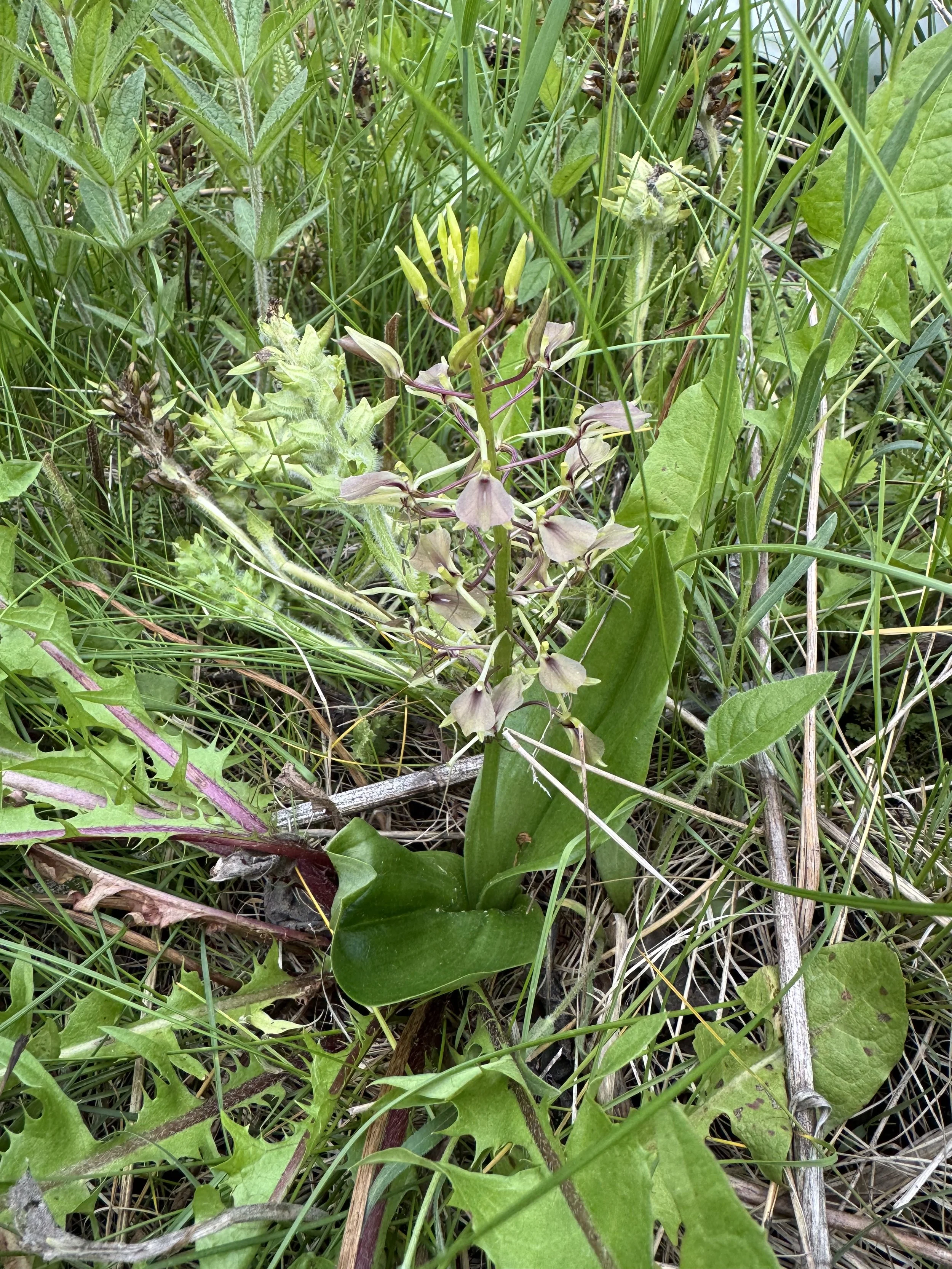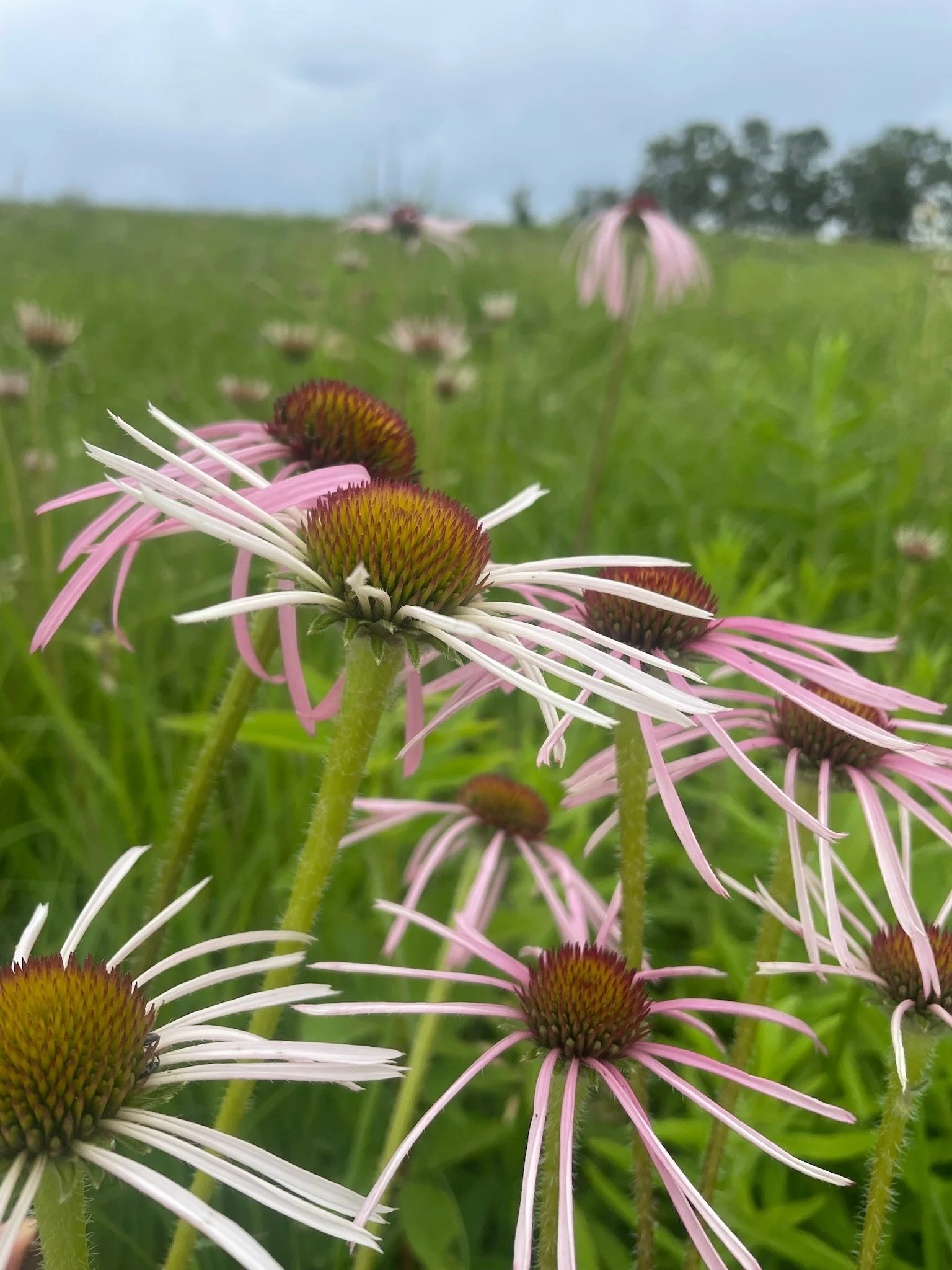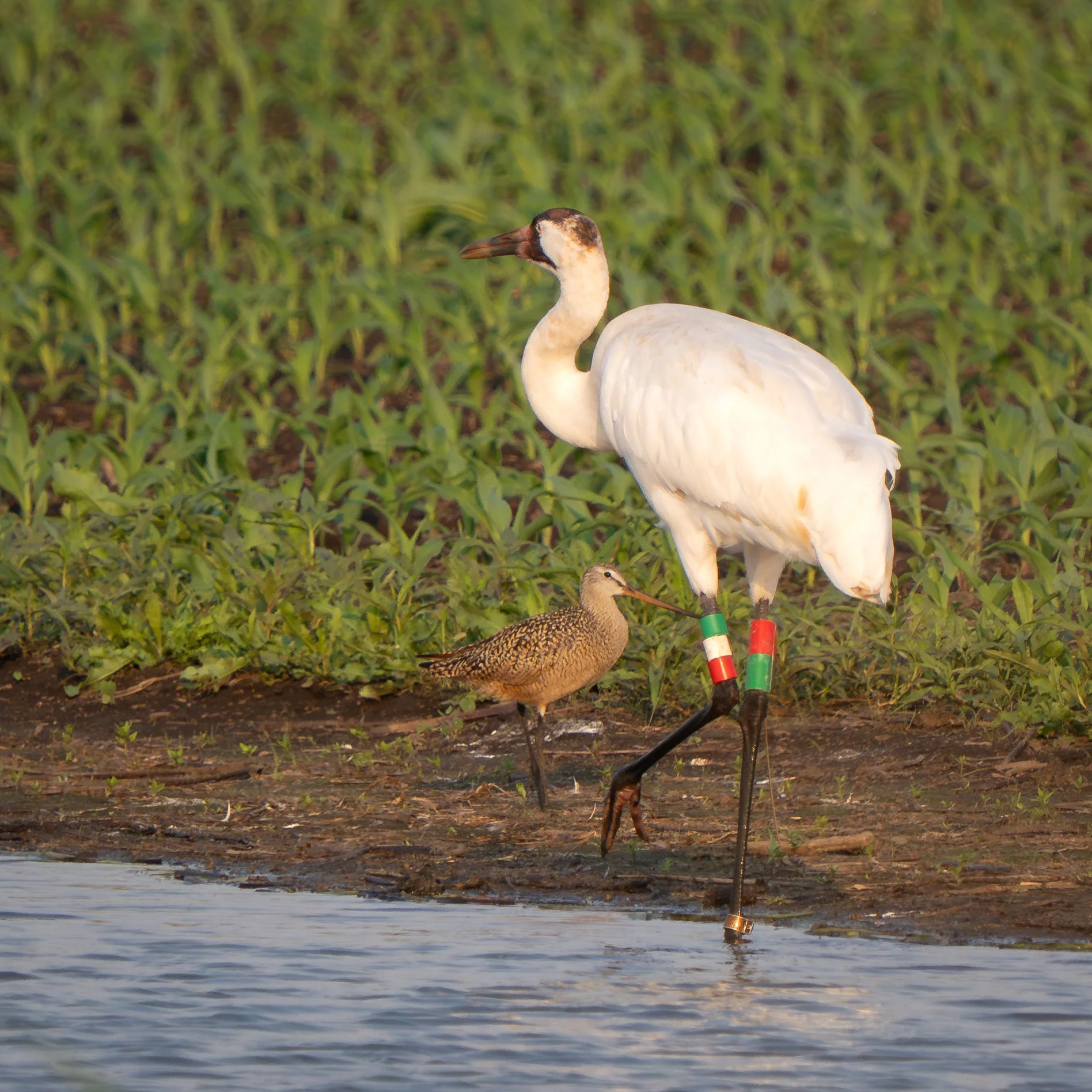Each summer, Southern Wisconsin Bird Alliance (SoWBA) employs motivated and enthusiastic interns to assist sanctuary staff during the bustling summer, while learning the art and science of ecological restoration. This year, Becca Black, Logan Bahr, and Andy Smith (returning for a second year) worked full time as ecological restoration interns at Goose Pond Sanctuary; Juanita Duarte, an intern from the Natural Resource Foundation of Wisconsin’s Diversity in Conservation program, joined the Goose Pond team for a week. Our interns worked diligently to remove wild parsnip, sweet clover, honeysuckle, and many other invasive species despite weather that was often hot, wet, and/or buggy. They also collected seed from dozens of plant species, conducted Karner blue butterfly surveys, assisted with banding American Kestrels and Purple Martins, and went on several educational field trips. This season, the interns also worked at SoWBA’s newest property, Hillside Prairie Sanctuary, removing invasive plants, putting out signage, taking down deer stands, and removing a dumpster-load of trash (literally) from the property.
Tucker Sanborn with interns Logan Bahr, Becca Black, and Andy Smith pose near a filled dumpster at Hillside Prairie Sanctuary (photo by Emma Raasch/SoWBA).
Oftentimes, it’s the little things that make working in the heat, swatting bugs, or wringing out soaking wet socks worthwhile. Whether it’s a close encounter with your favorite bird, finding a rare species, or learning a new plant, there’s always something to brighten your day while working in nature. We asked our three ecological restoration interns what stuck out to them from their summer in the prairie. . .
“One of my favorite parts of working at Goose Pond is never knowing what plants I’ll find each day. Whether it’s seeing familiar friends like butterfly milkweed (Ascpelias tuberosa) for the first time of the season or stumbling upon a small patch of wood lilies (Lilium philadelphicum), seeing plants in their natural settings is always a treat. That’s why one of my favorite memories of the summer is finding a patch of large twayblade (Liparis liliifolia) orchids on the hillside overlooking Goose Pond.
Large twayblade (photo by Emma Raasch/SoWBA).
I was pulling invasive plants on the hill—a frequent and important task in prairie restorations—and had just bent down to pull a sweet clover (Melilotus officinalis) when a pale, earthy pink color caught my eye. It was the flower of an orchid, nestled nicely in an otherwise unremarkable clump of vegetation. As I walked closer I noticed more by my feet. By the time I saw the whole patch I counted over 20 individuals. Each flower was beautiful, with a delicate, almost translucent lower petal. What stood out to me the most about that experience was that there was nothing about the surrounding vegetation to suggest such a unique plant would be lurking nearby. The experience showed me that each patch of land might have something worth conserving.”
—Logan Bahr
“In A Sand County Almanac, Aldo Leopold describes observing the “prairie birthdays” of maturing plants moving through different developmental phases. Our summer at Goose Pond has been full of these anniversaries. Day One was a balmy 44 degrees, with wind cutting through fields of flowering golden alexanders and wild lupine. Those blossoms are seedheads now, difficult to spot through the towering prairie that shot up around them.
Pale purple coneflower at Goose Pond Sanctuary (photo by Graham Steinhauer/SoWBA).
May’s bright golden blanket of alexanders gave rise to the deep indigo of June spiderwort, with pale purple coneflower sprinkled in by early July, finally settling into the deep gold of late summer sunflowers. Less conspicuous prairie birthdays hide in this array—wood betony maturing underfoot, big bluestem seedheads drooping, and just recently, my first handful of wild blackberries ripening under a leaf.
While I limit my snacking to berries, many other Goose Pond regulars view the prairie buffet with hungry eyes and drawn napkins. We frequently interrupt their summer feast as we weave between management units, but the impatient ranks of ground squirrels, leafhoppers, sparrows, and beetles don’t wait long for us to go. To them, each prairie birthday is a promise of full bellies.
This season has given me not only the opportunity to observe these anniversaries, but the eyes to appreciate their context in the greater ecosystem. My summer here is almost done, but come next May, I’ll be looking for the wave of golden alexanders and wild lupine, ready to herald in another summer of birthdays on the prairie.”
—Becca Black
“One of my favorite things about being an intern at Goose Pond is that I get the opportunity to look for cool birds before, during, and after every day of work. Each morning I try to arrive 30 minutes early to see what the bird activity is like around the ponds that day. I’ll be honest, some days I don’t see or hear much at all, which can make getting up early feel a little silly. On other days, though, the energy that I put into getting up and getting out there is very worth it. One of these good days actually ended up being one of my favorite birding expeditions ever.
It began like most other mornings, a couple Red-winged Blackbirds here, some Song Sparrows and Common Yellowthroats there, but nothing too exciting. I was inspecting a white splotch in the distance that I believed to be some sort of swan when from behind me I heard a loud, raspy WHEEECH. I whipped my head around to find a proud looking Yellow-headed Blackbird sitting atop some bulrush. From the same direction, I then heard the unique vocalization of a Least Bittern. In the matter of a few minutes, I had been able to identify two really cool birds, but it didn’t stop there. The Marbled Godwit that had been hanging around the ponds decided to make an appearance as well, along with a fellow shorebird, the significantly smaller Dunlin.
And that white splotch from earlier? That ended up being one of the rarest birds that I have ever seen: a Whooping Crane.”
—Andy Smith
Marbled Godwit (left) with Whooping Crane (right) at Goose Pond Sanctuary (photo by Ralph Russo).
A big thank you to Becca, Logan, and Andy for all of their hard work this summer! We look forward to seeing what is next for this excellent group of conservationists.
Written by Graham Steinhauer, Goose Pond land steward, and Emma Raasch, Goose Pond ecological restoration technician, with contributions from summer 2025 interns Logan Bahr, Becca Black, and Andy Smith.
Cover image by Tucker Sanborn/SoWBA. Interns Andy, Logan, and Becca pose in front of a big pile of pulled weeds.









